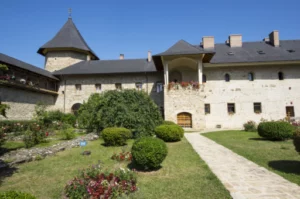Leon Valley: A Look Back at Voting Trends in 2020
Leon Valley, a small city nestled right outside San Antonio, has become a fascinating case study when it comes to understanding voting trends in Bexar County. As we gear up for the 2024 elections, it’s worth taking a stroll down memory lane to examine how things played out in 2020. Spoiler alert: The numbers tell a pretty intriguing story!
Democrat vs. Republican: Who Came Out on Top?
In 2020, of the 4,123 Leon Valley residents who cast their votes, about 46.6% opted for former President Donald Trump. That’s interesting, especially because Leon Valley has a population of around 11,545. While that may sound like a decent chunk who sided with Trump, keep in mind that the district displayed a more progressive trend compared to its neighbor, Helotes, which is known to lean more towards the Republican side.
Speaking of Helotes, this suburban community had around 4,460 voting residents, with approximately 45.33% backing President Joe Biden. In terms of demographics, the contrast between Leon Valley and Helotes couldn’t be starker. Leon Valley is more racially and economically diverse, while Helotes boasts a much higher average household income of $154,826 compared to Leon Valley’s $82,725.
Breaking Down Additional Voting Trends
Zooming out a bit, if you take a look at the larger picture across Bexar County, it turns out that the cities echo some national voting patterns. More racially diverse and younger residents in cities like Leon Valley and Balcones Heights leaned toward the Democrats, while older and generally wealthier residents in places like Helotes showed more support for Republicans. This fascinating dynamic is one of the key reasons why it’s important to understand the varied political landscape here.
Leon Valley stands out as younger and more economically diverse, while Helotes, being older and wealthier, leans strongly red. In fact, those approaching their 50s were more likely to sway toward Trump, while younger voters consistently favored Biden. This reflects the trends outlined by Pew, which highlight how partisanship changes as individuals break into different age brackets.
A Decrease in Young Voters?
Looking ahead to 2024, there’s a bit of cause for concern, especially in terms of young voter registration in Texas. Data indicates that there’s been a slight increase of 0.1% in young voters registering compared to 2020, but the numbers of those aged 18-19 registering for the first time are significantly down by 36%. It’s a trend that could have substantial implications on the ballots come election day.
The Pulse of Diverse Neighborhoods
When we take a peek into Balcones Heights, another small city in the Westside area with about 2,743 residents, we see that only 31.45% chose Trump in 2020. This area boasts an average household income of around $38,147, which is well below both Bexar County’s and Texas’s averages. In contrast, the diversity here is notable, with a significant proportion of Hispanic and multi-racial residents.
Analyzing Voter Demographics
So what does this all mean for the upcoming 2024 elections? Well, as the demographics continue to evolve, it may very well reflect in the results. Keeping an eye on changes in both population and voting preferences gives a clear insight into how the race might shape up. The vibrant, diverse communities in places like Leon Valley and Balcones Heights are expected to play an increasingly crucial role as they mirror national trends.
The news isn’t final yet; as we prepare for the midterm elections, the atmosphere is buzzing with anticipation. Will the winds of change favor the scales towards Democrats, or will Republicans retain their foothold in the suburban outskirts? Westside cities might just hold the key!








